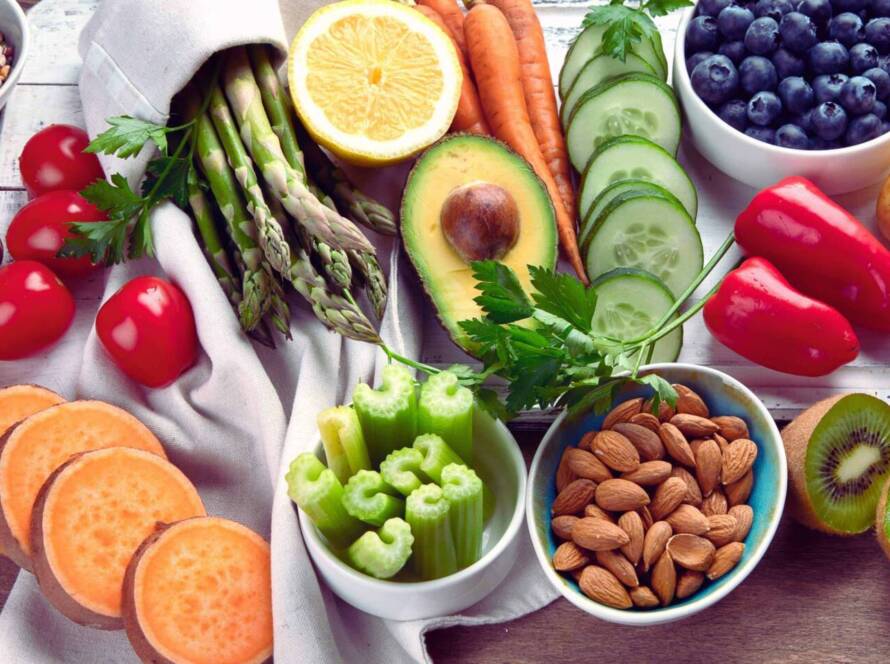In today’s fast-paced world, where plant-based diets are becoming increasingly popular, maintaining adequate iron levels can be a challenge. Iron is an essential mineral that plays a crucial role in the body, aiding in the transport of oxygen and the production of energy. While meat is traditionally known as a rich source of iron, vegetarians and vegans need to be a bit more strategic to ensure they’re getting enough of this vital nutrient. At Morkare Natural Clinic, as one of the Best naturopath, Nutrition and Homeopath in Brisbane, we understand the importance of a balanced diet for overall well-being. In this blog post, we’ll explore how vegetarians can increase their iron intake and absorption through strategic dietary choices and a well-crafted meal plan.
Understanding Iron
Iron exists in two forms: heme and non-heme. Heme iron is found in animal products and is more easily absorbed by the body. Non-heme iron, found in plant-based foods, is less readily absorbed. However, with the right dietary strategies, vegetarians can ensure they’re meeting their iron needs.
Iron-Rich Foods for Vegetarians
Legumes
Legumes are an excellent source of non-heme iron. Incorporate these into your diet to give your iron levels a natural boost:
- Lentils: Cook up a hearty lentil soup or add them to salads for a nutritious iron-rich meal.
- Chickpeas: Hummus, anyone? Or perhaps a delicious chickpea curry? The options are endless.
- Black Beans: Add these to your tacos, burritos, or salads for a delicious iron-rich kick.
Nuts and Seeds
Nuts and seeds are not only delicious but also packed with essential nutrients, including iron:
- Pumpkin Seeds: A small handful of pumpkin seeds can provide a significant iron boost. Sprinkle them on top of salads or enjoy them as a snack.
- Sunflower Seeds: Much like pumpkin seeds, sunflower seeds are an excellent source of iron and can be easily incorporated into your daily diet.
- Cashews: Snack on cashews or use them as a base for creamy sauces and soups.
Whole Grains
Whole grains are not only a good source of fiber but also of iron:
- Quinoa: Swap out rice for quinoa in your meals. It’s not only delicious but also packed with iron.
- Oats: Start your day with a warm bowl of oatmeal topped with your favorite fruits and nuts for a nutritious iron-rich breakfast.
Dark Leafy Greens
Dark leafy greens are a nutritional powerhouse, and they’re packed with iron:
- Spinach: Whether raw in a salad or cooked in a stir-fry, spinach is a versatile ingredient that can help you meet your daily iron needs.
- Kale: Add kale to your smoothies, salads, or soups for a nutrient-dense iron boost.
Enhancing Iron Absorption
While incorporating iron-rich foods into your diet is essential, there are also ways to enhance the absorption of iron from plant-based sources:
Vitamin C
Consuming vitamin C-rich foods alongside iron-rich foods can significantly increase iron absorption. Here are some options:
- Citrus Fruits: Oranges, grapefruits, and lemons are all excellent sources of vitamin C.
- Bell Peppers: Add some bell peppers to your meals for a boost of vitamin C.
- Strawberries: Enjoy a handful of strawberries as a snack or add them to your breakfast for an extra dose of vitamin C.
Cooking in Cast Iron Cookware
Cooking food in cast iron cookware can increase the iron content of the food, especially if the food contains acidic ingredients. Try cooking tomato-based dishes in cast iron cookware to boost your iron intake.
Avoiding Inhibitors
Certain substances can inhibit the absorption of iron. Avoid consuming these substances alongside iron-rich foods:
- Tea and Coffee: Tannins found in tea and coffee can hinder iron absorption. Try to consume these beverages between meals rather than with them.
- Phytates: Found in whole grains and legumes, phytates can also inhibit iron absorption. Soaking, sprouting, or fermenting these foods can help reduce their phytate content.
Vegetarian Iron-Boosting Meal Plan
Here’s a simple and delicious meal plan to help vegetarians increase their iron intake:
Breakfast
- Oatmeal: Cooked with almond milk and topped with strawberries and pumpkin seeds.
- Orange Juice: A glass of freshly squeezed orange juice.
Snack
- Trail Mix: A mix of cashews, almonds, and dried apricots.
Lunch
- Quinoa Salad: Quinoa mixed with black beans, bell peppers, spinach, and a squeeze of lime juice.
- Side: A small slice of watermelon.
Snack
- Hummus with Carrot Sticks: A delicious and nutritious mid-afternoon snack.
Dinner
- Chickpea Curry: A flavorful curry made with chickpeas, tomatoes, spinach, and a variety of spices, served with brown rice.
- Side Salad: Spinach and kale salad with pumpkin seeds and a lemon vinaigrette dressing.
Conclusion
Maintaining adequate iron levels on a vegetarian diet is entirely achievable with some careful planning and strategic food choices. By incorporating iron-rich foods into your meals and enhancing iron absorption, you can ensure that you’re meeting your body’s needs. At Morkare Natural Clinic, we believe that a balanced diet is the cornerstone of good health, and with the right knowledge, you can thrive on a plant-based diet. If you’re struggling to meet your nutritional needs, don’t hesitate to reach out to one of our experts. Your journey to optimal health starts today!



